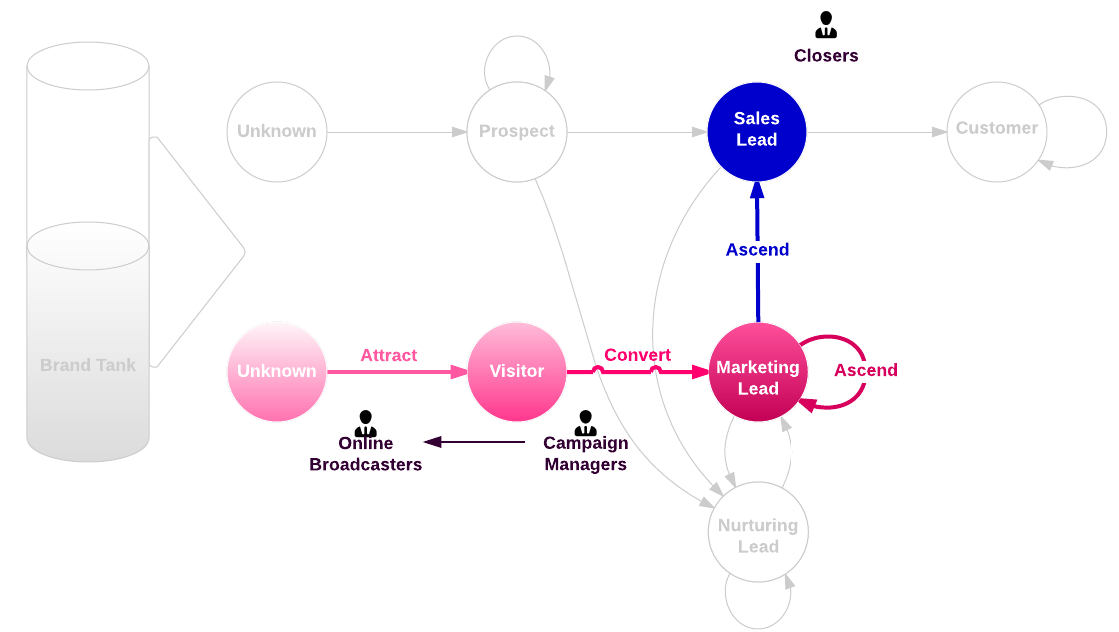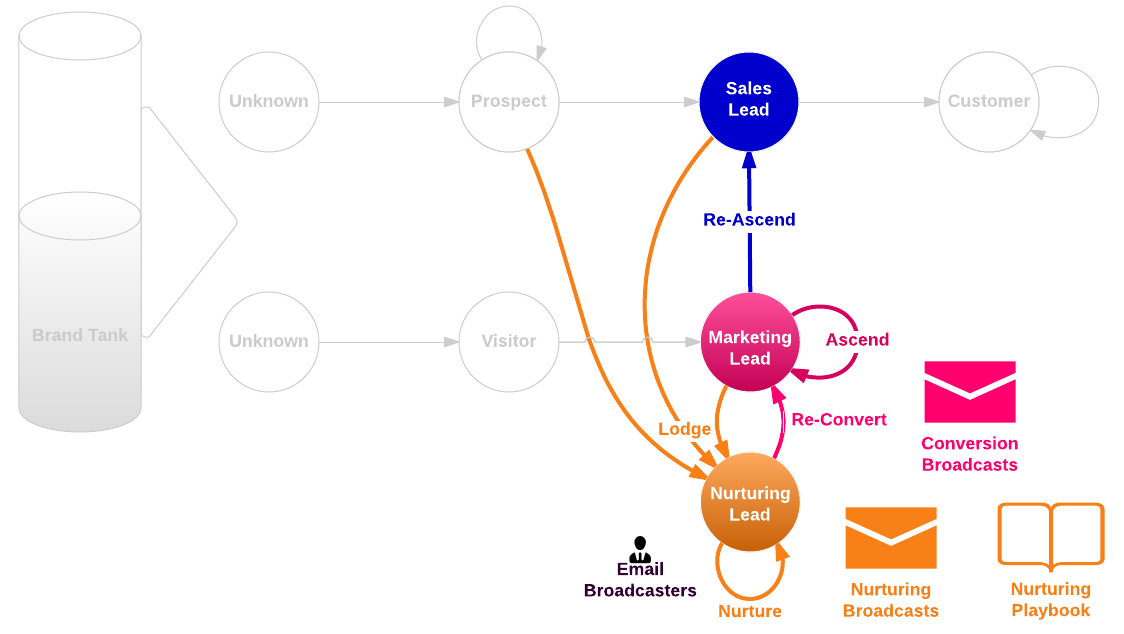8.5 Sales and Marketing KPIs That Will Create Predictable Growth

“Why do you even measure?”
This question came from a successful sales manager at a large manufacturing company I met a couple of years ago.
And based on the types of metrics he was measuring at the time, he was absolutely right. Because he was measuring so called “vanity metrics”, and they are designed to boost your ego, not help you make decisions about how to best shape your company’s future.
In this post, we’ll show you what to measure in order to get a new superpower: The ability to predict and shape your sales results 6-24 months from now. Read more to learn how.
How you can measure sales and marketing metrics that give you value
What separates vanity sales and marketing metrics from actionable ones?
The difference is that actionable ones answer the following two questions:
- What is my biggest bottleneck to more revenue?
- If I invest in relieving that bottleneck today, how much additional revenue will be produced and after how long time?
The first one helps you determine what’s stopping you from producing more sales.
The second one assures you (and any stakeholders in your organization) that an investment in doing something about this bottleneck will pay off.
Please take a moment and write down on a piece of paper the top 3 KPIs you are measuring today. Now, ask yourself: “Do these KPIs directly answer the above questions?”
An organization that will give you predictive sales and marketing KPIs
Does your organization rely on exceptional individuals or on well-defined processes that can be run by anyone you train?
Only a process-driven sales and marketing organization will support your predictive sales and marketing KPIs.
The below model shows such an organization running fully integrated sales and marketing processes:

Image: The Unified Business Model for Sales and Marketing Alignment
The model consists of three sub-process:
- Proactive Outbound Sales (upper part: Unknown → Prospect → Sales Lead → Customer)
- Inbound Marketing (lower part: Unknown → Visitor → Marketing Lead)
- Lead Nurturing (bottom bubble: Lodge → Nurture → Re-Convert)
With this foundation, what are the specific KPIs that will give you the power to create predictable growth?
The Sales and Marketing KPIs that allow me to create predictable growth
Below are the KPIs you need to measure in each sub-process.
Proactive Outbound Sales KPIs:

KPI 1: Calls per day (and conversion rate and time to Outbound Sales Lead)
KPI 2: Current number of Outbound Sales Leads (and conversion rate and time to Qualified Sales Lead)
KPI 3: Current number of Qualified Outbound Sales Leads (and conversion rate and time to Customer)
Inbound Marketing KPIs:

KPI 4: Visits per month (and conversion rate and time to Marketing Lead)
KPI 5: Current number of Marketing Leads (and conversion rate and time to Inbound Sales Lead)
KPI 6: Current number of Inbound Sales Leads (and conversion rate and time to Qualified Inbound Sales Lead)
KPI 7: Current number of Qualified Inbound Sales Leads (and conversion rate and time to Customer)
Lead Nurturing KPIs:

KPI 8: Number of active Nurturing Leads (and conversion rate and time to Marketing Lead)
KPI 8.5: In addition, you need to measure conversion rate and time from Prospects, Outbound Sales Leads, Qualified Outbound Sales Leads, Inbound Sales Leads and Qualified Inbound Sales Leads. In addition, you need to measure conversion rate and time from Marketing Leads to Nurturing Leads.
How you can use your new sales and marketing KPIs to create predictable growth
How about a simple but powerful spreadsheet future predictor?
Now that you measure all these KPIs, you can build this (or you can ask us to build it for you). You can change one variable and immediately see how much sales that will result in, and after how long time. Should you hire another Hunter or Campaign Manager? Should you pay more for advertising? Do you need more Closers? Where is your biggest bottleneck to more revenue?
The ability to accurately predict ROI of various decisions like this will give you the power, confidence and assurance to systematically grow your company in a predictable way. Over the long run, this means the difference between being average and being the best company.
In this blog post we have explained what kind of organization you need and which KPIs to measure in order to grow your company in a systematic and predictable way.
In the next blog post, we will go through the three reasons why most organizations fail to integrate sales and marketing.
(This was blog post number 8 in a series of 10 blog posts giving you a full guide to sales and marketing alignment.)

